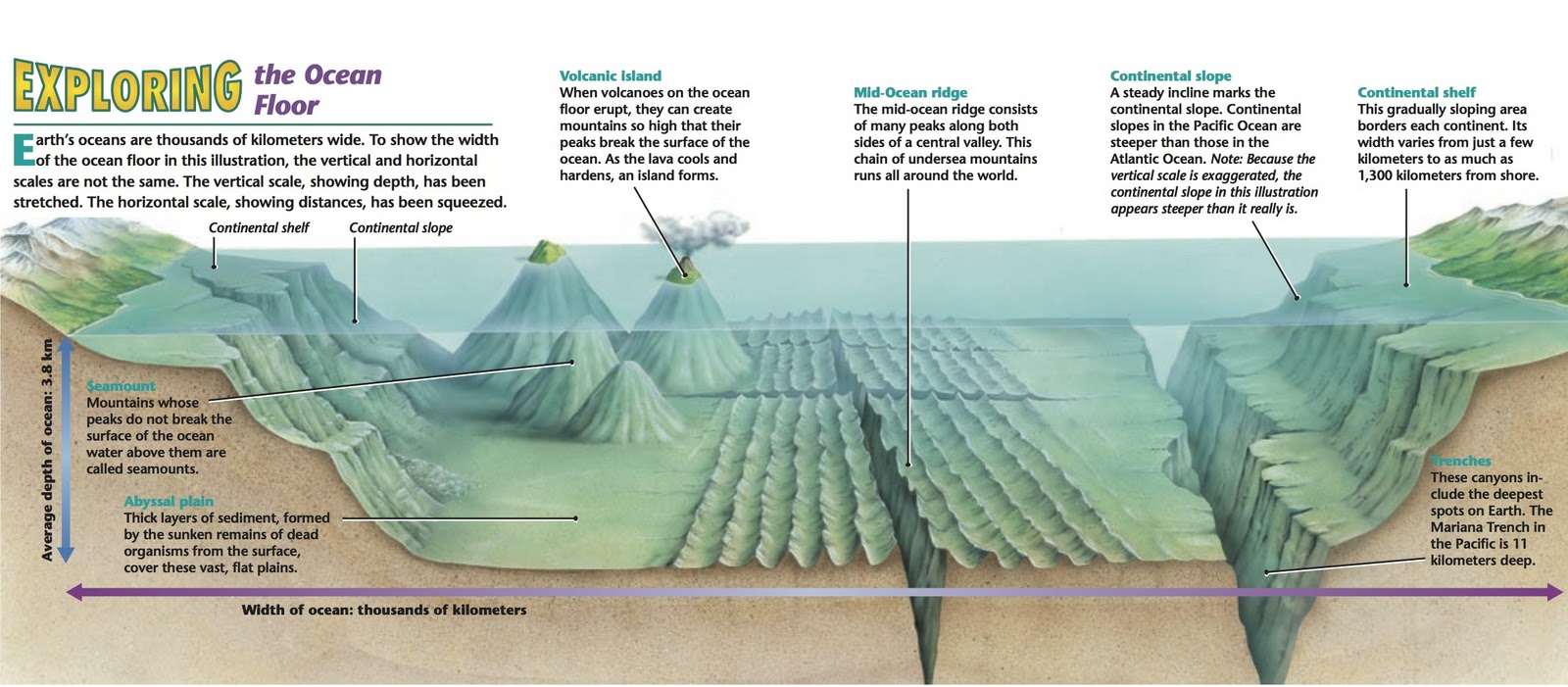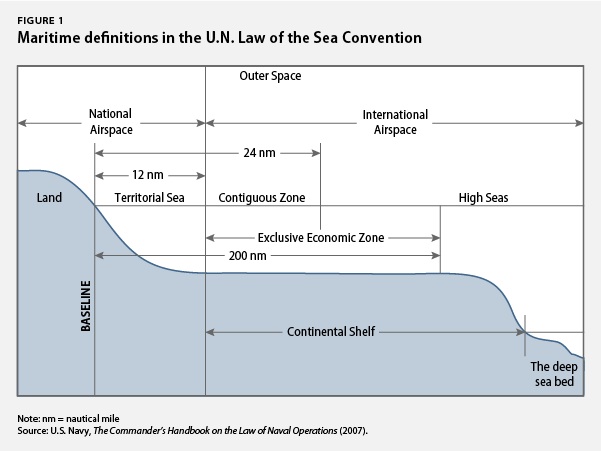-
Chapter 6: OCEANOGRAPHY
Introduction
Ocean crust isn't uniform or flat. It has higher diversity than continental crust.
It is highly dense, thick crust and basaltic.
Oceanic crust is created at the mid ocean ridge and destroyed at the Trench.
The ocean floor is divided into three main regions:
1. Ocean – Continent margin
· Continental shelf
· Continental slope
· Continental rise
2. Deep ocean plains / Abyssal plains
3. Mid ocean ridge

Continent Shelf:
This is the seaward extension of the continent from the shoreline to the continental edge. They are absent on mountainous coasts and are widest in shores of lowland coasts. The continental shelf formation may be by submerging of continental edges due to rising water levels or by water erosion. Alternately they could have been formed by deposition of silt from rivers.
Properties:
- They are responsible for preventing cold under current from rising and also increase the height of tides.
- They are excellent location for ports.
- The sunlight reaches the shelves and so minute plankton grows on them. This causes fishes to reach the shelves. The shelves are thus known as the richest fishing grounds of the world.
Characteristics:
1. It is shallow part of ocean and connected to the continent.
2. It has highest bio diversity.
3. Light reaches the bottom and hence aquatic plants are found.
4. Depth is about 200m.
5. Sediments from land are also found.
Resources in continental shelf:
1. 90% of petroleum reserves are found in shelves. E.g.: Persian Gulf, Strait of Hormuz, Arctic Ocean, and Gulf of Mexico.
2. Sulfur metal rarely found on land but is abundant in continental shelf due to marine volcanism.
3. Concentration of heavy metals on shelf. E.g.: Monazite sand [thorium], gold, silver and diamonds.
4. Pearls.
Continental Slope:
1. Massive slope at the end of the shelf.
2. Landfalls of terrestrial deposits.
3. Great rivers form canyons, underwater waterfalls.
Continental Rise:
1. Transition between ocean block and continental block.
2. Absent near trenches as trenches consume the depositional material of the continental rise.
Abyssal plains:
1. Occupies 2/3rd of the ocean floor.
2. High diversity in types of landforms and deposits from continental and aquatic sediments.
Ocean trenches: These are long, narrow deeps that penetrate to about 30000 feet at times. They are usually located near continents. Pacific Ocean has the deepest trenches.
Resources from an abyssal plain:
1. Poly metallic nodules are a concentration of metals around a core. Found in all oceans. Some of the minerals are rare on land.
UN Convention on laws of seas:
1. Decides deep sea mining, environment protection, maritime boundary and dispute settlement.
2. As per the convention, territorial sea is 12 miles from coast, 24 miles is contiguous zone and 200 miles is the exclusive economic zone where state can explore minerals and produce energy.

Fig 2: UN Laws of the Sea
Chapter Review
Score more than 80% marks and move ahead else stay back and read again!